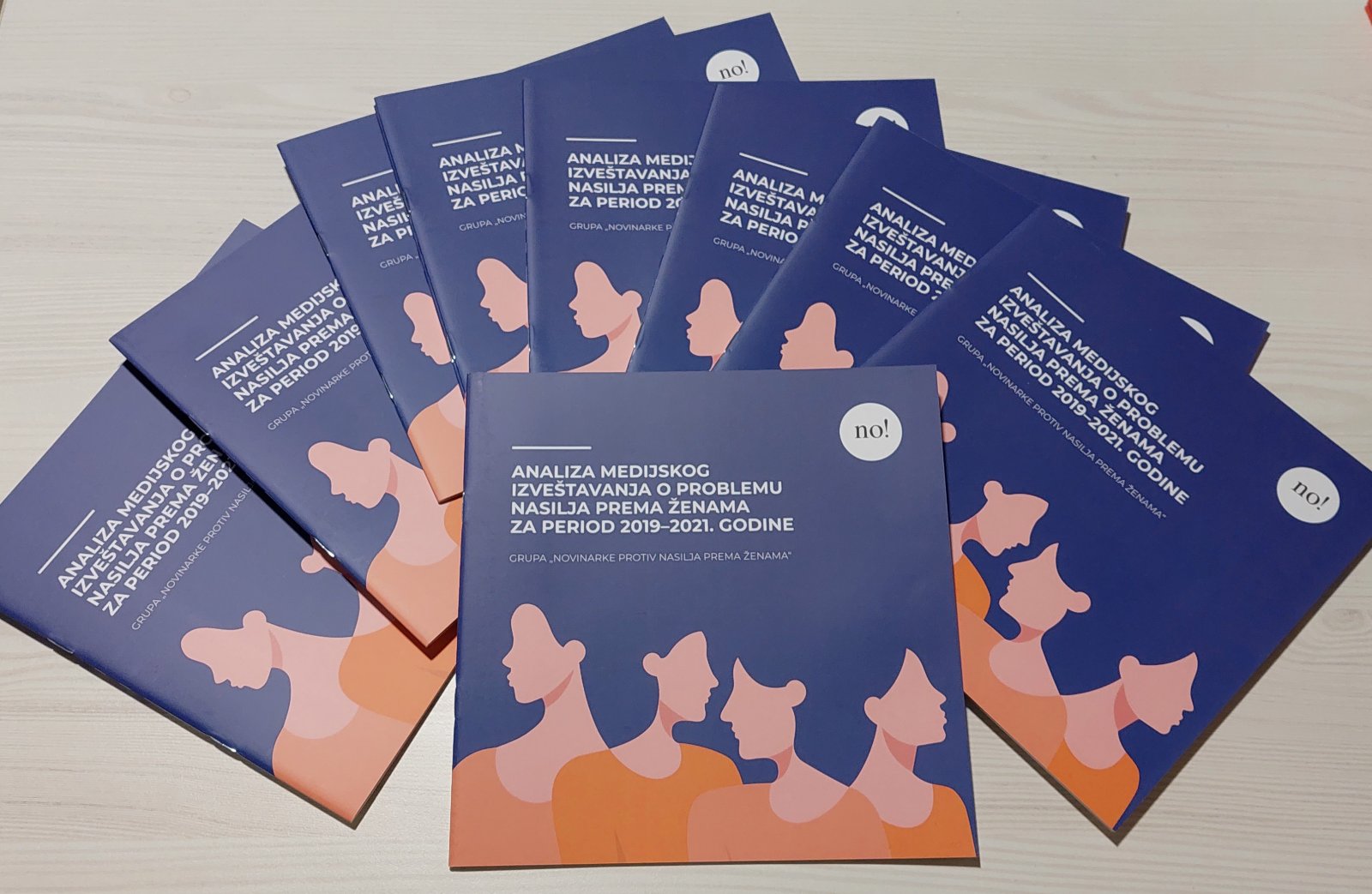Less sensationalism, but still insufficient information on prevention and protection of women from violence
How did Serbian media report on violence against women from 2019 to 2021?
April 14, 2022
Presentation of the Analysis, from left to right: Ana Manojlović, RTS journalist, Jovana Stanković, Euronews Serbia journalist, Sanja Pavlović, Autonomous Women's Center activist, Jovana Gligorijević, Vreme weekly journalist and Maja Đundić, UNDP Serbia Gender Equality Portfolio Manager.
Belgrade, April 13, 2022. – The previous three years saw a decrease in media reports which do not respect the ethical standards of reporting on violence against women, as well as the use of sensationalist and stereotypical expressions for violence, the survivor or perpetrator. However, media still rarely report on the prevention of violence and forms of support to survivors. This is shown in the results of the Analysis of media reporting on the problem of violence against women from 2019 to 2021, conducted by the group „Journalists against violence” with the support of the United Nations Development Programme (UNDP) in Serbia.
The analysis of over 36000 reports from electronic and print media, has shown that this problem has occupied media attention to the greatest extent during 2021, as a result of testimonies of women who have spoken publicly about their experiences, above all regarding sexual violence.
Media still mostly report on concrete cases of violence (78% of reports in 2019 and 69% of reports in 2021), rather than violence against women as a phenomenon, its causes and consequences (22% of reports in 2019 and 23% of reports in 2021). The topic of violence against women is mainly the focus of online media, then print media, and least of all the topic of TV and radio stations.
„As journalists, we understand that media cover the violence against women when a concrete case happens. What we suggest is that journalists use reporting on individual cases of violence to shed light on the phenomenon of violence. This way, they can also help women who may be in a situation of violence to recognize it and report it”, Jovana Gligorijević, member of the Group and journalist of the „Vreme“ weekly explained.
"During 2021, we started also monitoring the type of violence media most often report on. A little over half of the media reports were on physical violence against women, while 44% reported on different forms of sexual violence. Economic violence against women is still completely out of media focus, with only 8% of reports on this form of violence“, Sanja Pavlović, group member and activist of the Autonomous Women’s Centre pointed out.
She added that when reporting on violence, media mentioned firearms in only 6% of reports, while there is almost no information on the consequences of firearms misuse.
„Media continue to be the main source of information on femicide - gender-based murder of women, as well as other forms of violence against women. This shows us just how much impact media have regarding this topic. The way media report on violence may affect the reactions of the general public and whether survivors will be given support. UNDP has supported the work of the group Journalists against violence since 2017, and we are proud to see changes for the better in media reporting“, Maja Branković Djundić, UNDP Serbia Gender Equality Portfolio Manager stated.
The most significant improvement in media reporting on this topic was noted regarding the publishing of information that justifies the act of violence by external factors or the perpetrator’s personal traits (poverty, unemployment, alcoholism). The share of such reports during the previous three years dropped almost by half. In addition to this, the responsibility for the committed violence is shifted from the perpetrator to the survivor in less and less media reports, and there are also less reports that minimize or ridicule violence or express disbelief towards survivors (9% of reports in 2021 compared to 15% of reports in 2019).
On the other hand, during all three observed years, a great number of media reports revealed the identity of the survivor and members of her family (50% of reports in 2019 and 40% of reports in 2021). Revealing details of the act of violence or statements of interviewees that are not relevant from the aspect of the public interest, as well as inappropriate titles, are still often present in media reporting (37% of reports in 2019 and 32% reports in 2021).
In order to encourage media to report in an educational manner, and not in a sensationalist way, the group “Journalists against violence” prepared Guidelines for reporting on violence against women and created trainings for journalists. More information on this can be found on the following website: www.novinarkeprotivnasilja.org.
The Analysis of media reporting on the problem of violence against women for the period from 2019 to 2021 is available in Serbian at his link https://bit.ly/36bx6Jw, and was developed within the project “Integrated Response to Violence against Women and Girls in Serbia III” jointly implemented by UNICEF, UN Women, UNFPA and UNDP, with support of the Government of Sweden and in partnership with the Government of the Republic of Serbia.

 Locations
Locations




